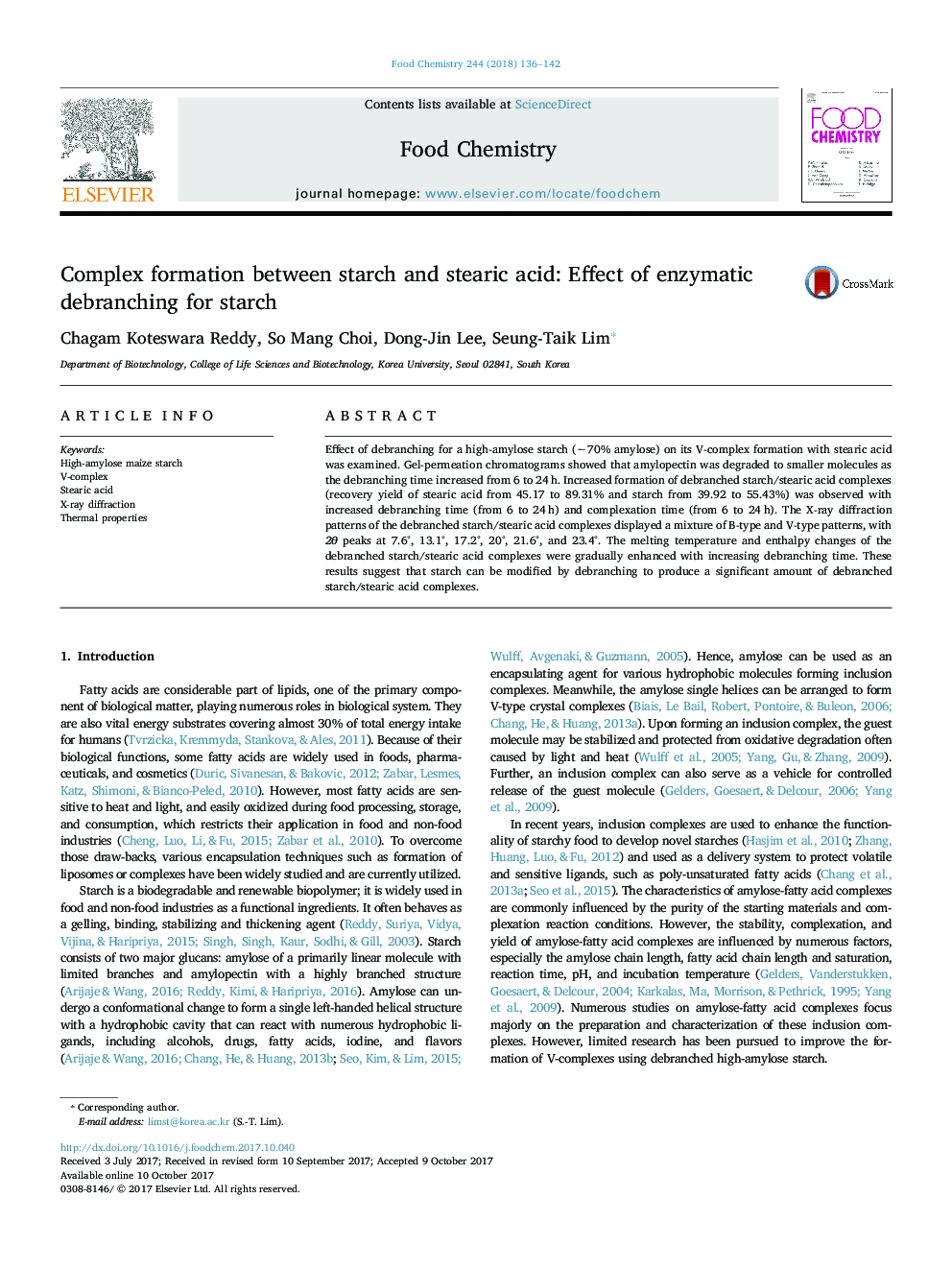| کد مقاله | کد نشریه | سال انتشار | مقاله انگلیسی | نسخه تمام متن |
|---|---|---|---|---|
| 5132398 | 1492048 | 2018 | 7 صفحه PDF | دانلود رایگان |
- Debranching enhanced the formation of starch/stearic acid complexes.
- There was an optimum starch chain length for starch/stearic acid complexes.
- The complex involving helices among amylopectin residue or amylose and stearic acid.
- Complex yield of stearic acid could reach 89.31% by debranching process.
Effect of debranching for a high-amylose starch (â¼70% amylose) on its V-complex formation with stearic acid was examined. Gel-permeation chromatograms showed that amylopectin was degraded to smaller molecules as the debranching time increased from 6 to 24â¯h. Increased formation of debranched starch/stearic acid complexes (recovery yield of stearic acid from 45.17 to 89.31% and starch from 39.92 to 55.43%) was observed with increased debranching time (from 6 to 24â¯h) and complexation time (from 6 to 24â¯h). The X-ray diffraction patterns of the debranched starch/stearic acid complexes displayed a mixture of B-type and V-type patterns, with 2θ peaks at 7.6°, 13.1°, 17.2°, 20°, 21.6°, and 23.4°. The melting temperature and enthalpy changes of the debranched starch/stearic acid complexes were gradually enhanced with increasing debranching time. These results suggest that starch can be modified by debranching to produce a significant amount of debranched starch/stearic acid complexes.
Journal: Food Chemistry - Volume 244, 1 April 2018, Pages 136-142
